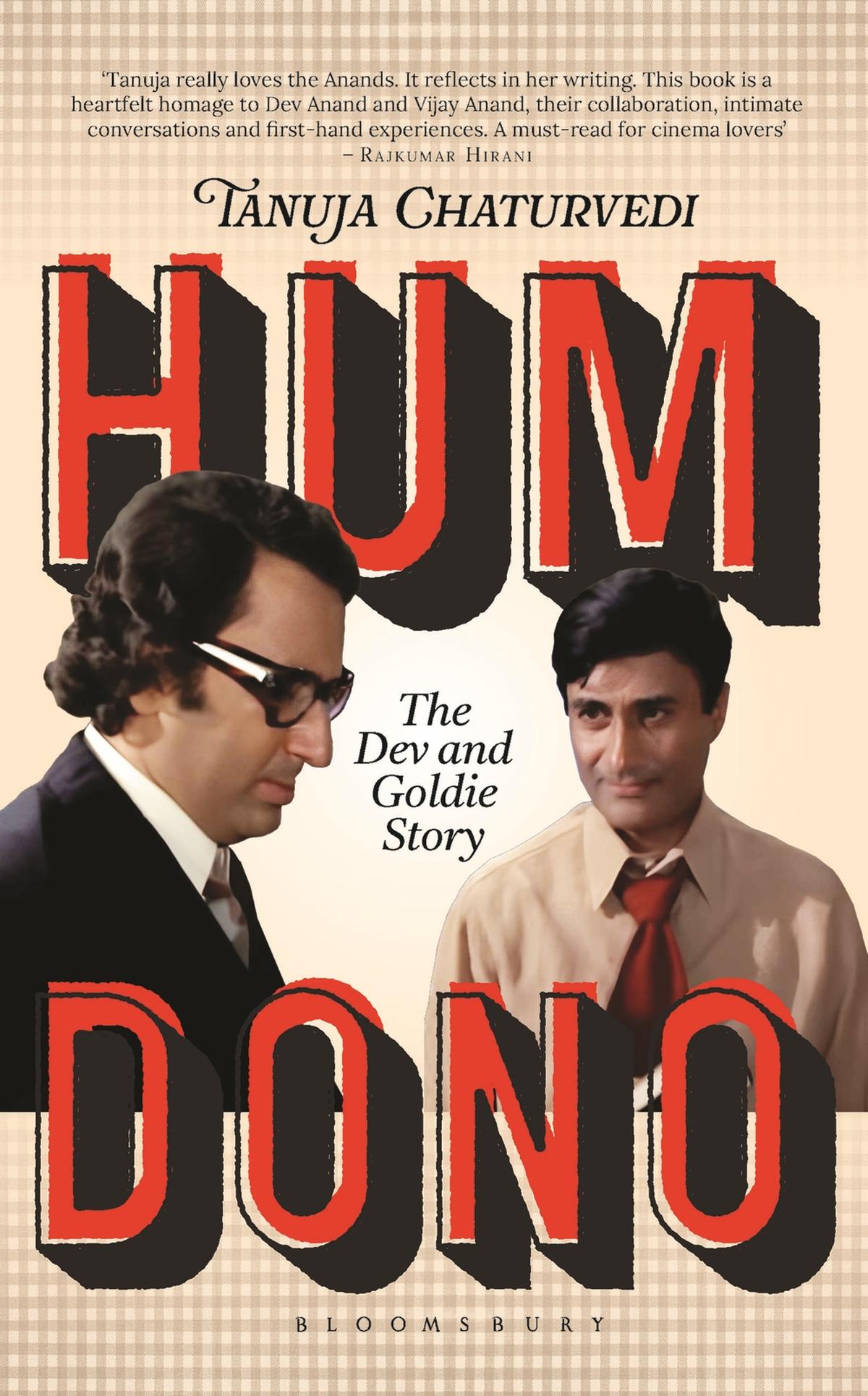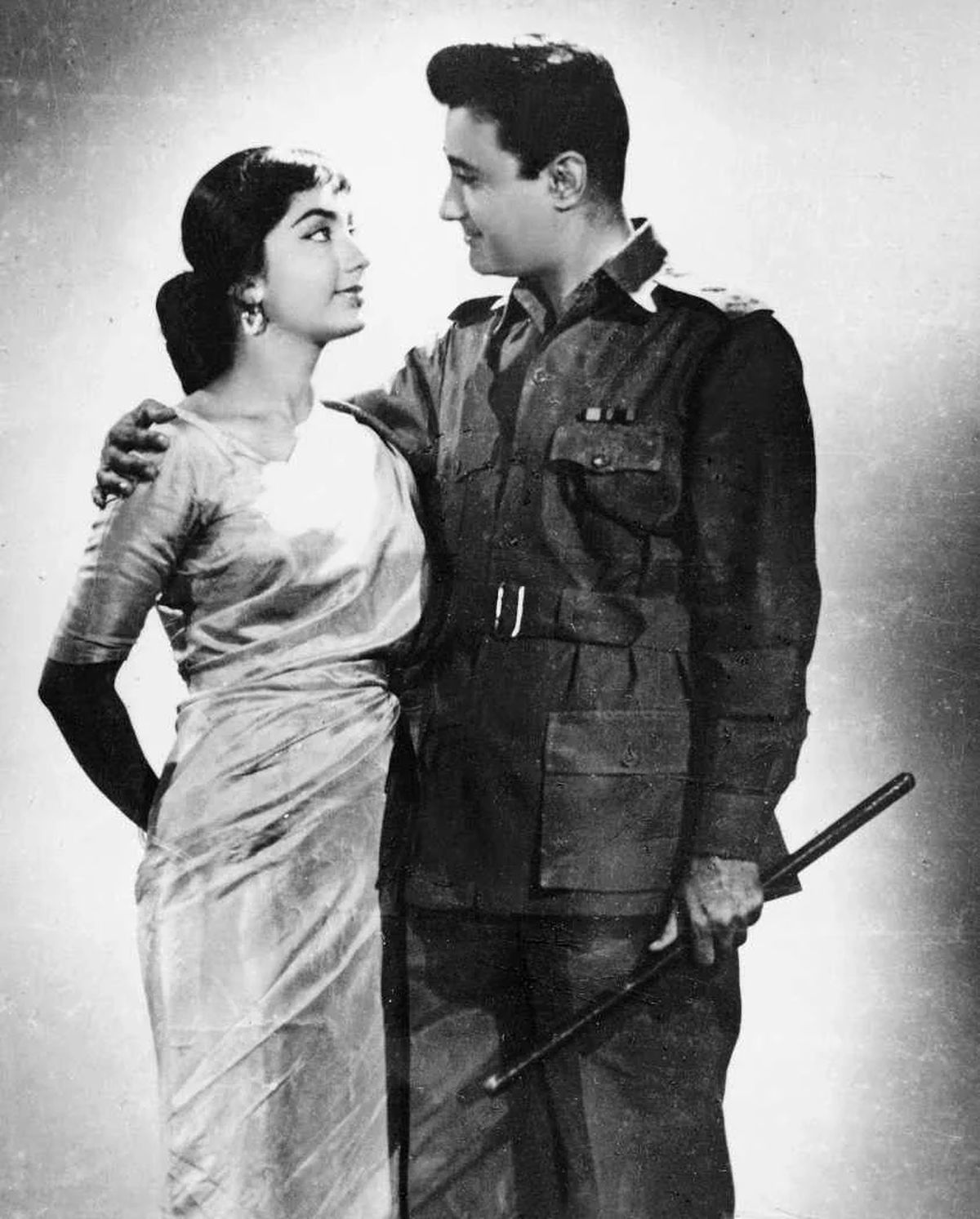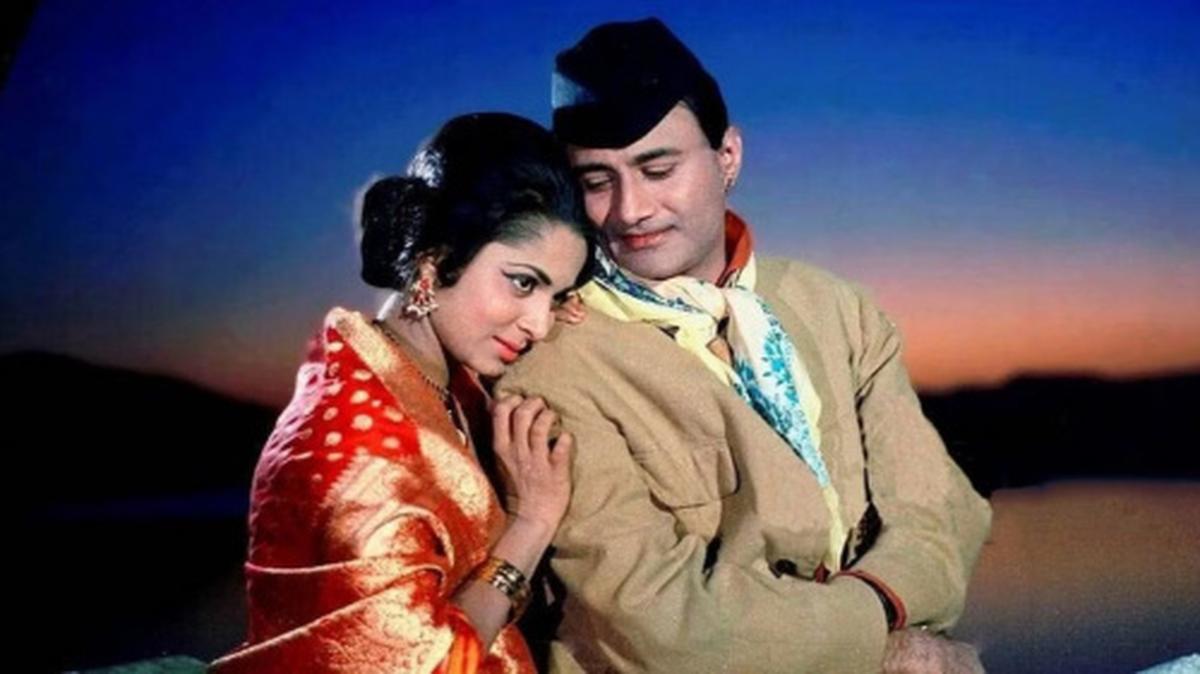How brothers Dev Anand and Vijay Anand blazed a trail in the world of cinema

Vijay Anand directing Dev Anand and Vyjanthimala in Jewel Thief
| Photo Credit: Courtesy: Bloomsbury Publishing
In the realm of cinema, the enigmatic bond between a director and an actor holds an enduring charm. Over the years, the collaborations between Satyajit Ray and Soumitra Chatterjee, Akira Kurosawa and Toshiro Mifune, Federico Fellini and Marcello Mastroianni have become part of film folklore. One more collaboration that falls almost in the same league but is not spoken about in the same breath is the one between brothers Vijay and Dev Anand.
Over the years, their films have acquired a cult following among different generations of filmmakers, it is time to look back at their association that resulted in gems such as Hum Dono (1961), Guide (1965), and Tere Mere Sapne (1971) . Dev had a healthy chemistry with other directors and Vijay directed other actors with distinction but when they came together it was magical.
A recent book, Hum Dono: The Dev and Goldie Anand Story (Bloomsbury), traces their fascinating journey under the arc lights. Tanuja Chaturvedi, who worked closely with Navketan Films, the production house of Anand brothers, shines a light on the men and their methods and intersperses the book with anecdotes and inside stories to assess their creative journey.
Like the track shot ingeniously used by Vijay in his thrillers, Tanuja aligns the charismatic Dev in the foreground while her gently probing lens tracks Goldie, as Vijay was popularly called, and his understanding of cinematic craft.

Tanuja Chaturvedi’s book
| Photo Credit:
Special Arrangement
Adding zing to Taxi Driver and Funtoosh with his inputs, Vijay showed signs that he would outgrow the giant shadow of Chetan, the eldest Anand who had developed a following among the intelligentsia with Neecha Nagar and Aandhiyaan. Starting with thrillers and crime capers such as Nau Do Gyarah (1957) and Kala Bazar (1960), Vijay lent Navketan a modern outlook and together with Dev brought an element of fun, intrigue, and Western sophistication to Indian cinema in the late 1950s. Their films were marked by noirish themes and chatty conversations where the hero could be a hustler, female characters had some agency and the songs reflected the story’s soul.

Dev Anand and Sadhana in ‘Hum Dono’
| Photo Credit:
Special Arrangement
Known for his technical flourishes in creating the mise-en-scene, with Nau Do Gyarah, Vijay attempted a youthful road movie when there was no concept of sync sound in the Bombay industry. To set the stage for the character of a black marketeer in Kala Bazar, Vijay shot the premiere show of Mehboob Khan’s Mother India with top stars and filmmakers of the time walking the red carpet. Later, with Johny Mera Naam and Jewel Thief, he established the template for crime thrillers.
Dev was a rare Hindi film hero whom lyricists such as Majrooh Sultanpuri described as haseen and khoobsurat in songs. But beneath that carefully constructed demeanour of a breezy romantic actor, who could play grey shades with conviction, there was a philosophical side to Dev that he was eager to express once he found a firm footing in the competitive industry. Vijay, who had a grounding in spiritual texts, gave this urge a concrete shape without taking away the mass appeal of the star. This marriage of art and entertainment was best reflected in Guide, their path-breaking collaboration. Vijay not only took liberty with the literary source on which the film was based, he also moved away from its English cinematic adaptation. Finally, he came up a magnum opus that rang true to India’s soul and remains relevant both in terms of its progressive text and context. Guide begins as the story of a tourist guide Raju, who comes across a woman whose bad marriage has made her an emotional wreck. He shows her the way to discover her inner strength. Ironically, in the process, Raju’s own complexes come to the fore and the guide loses his way only to find redemption towards the end of a poignant climax.

Waheeda Rahman with Dev Anand in Guide.
| Photo Credit:
Special Arrangement
As Tanuja, who teaches film interpretation, says, Vijay had this amazing ability to play with the story’s subtexts to construct the character’s interior. “For him, cinema was like a piece of architecture — a means to show, not tell, express or explain.”
This came through again in Tere Mere Sapne, which explored a doctor’s dilemma in a rotten system. Based on Dr A.J. Cronin’s The Citadel, realism permeated through Vijay’s screenplay and we got to see a glimpse of the actor in Dev and the glamorous Mumtaz as a powerful performer.
Not to forget Dev’s neatly etched double role and Sadhana’s magnetic appeal in Hum Dono, which Vijay co-directed with Amarjeet, the public relations man at Navketan. A war film with a tender core, Vijay’s positioning and treatment of Sahir Ludhianvi’s songs to generate moments of epiphany make Hum Dono a film for the ages.
The brothers shared a creative camaraderie
| Photo Credit:
Courtesy: NFDC
The depth of their endeavour is reflected in their legacy as well. There is hardly any similarity between Sriram Raghavan and Sanjay Leela Bhansali. But both swear by the art of Goldie. If one follows the art of creating a crime scene and credit rolls, the other pays tribute to his song picturisation. Like R.D. Burman’s music, Vijay Anand continues to live on through a new generation of filmmakers.
Published – November 16, 2024 06:03 pm IST





